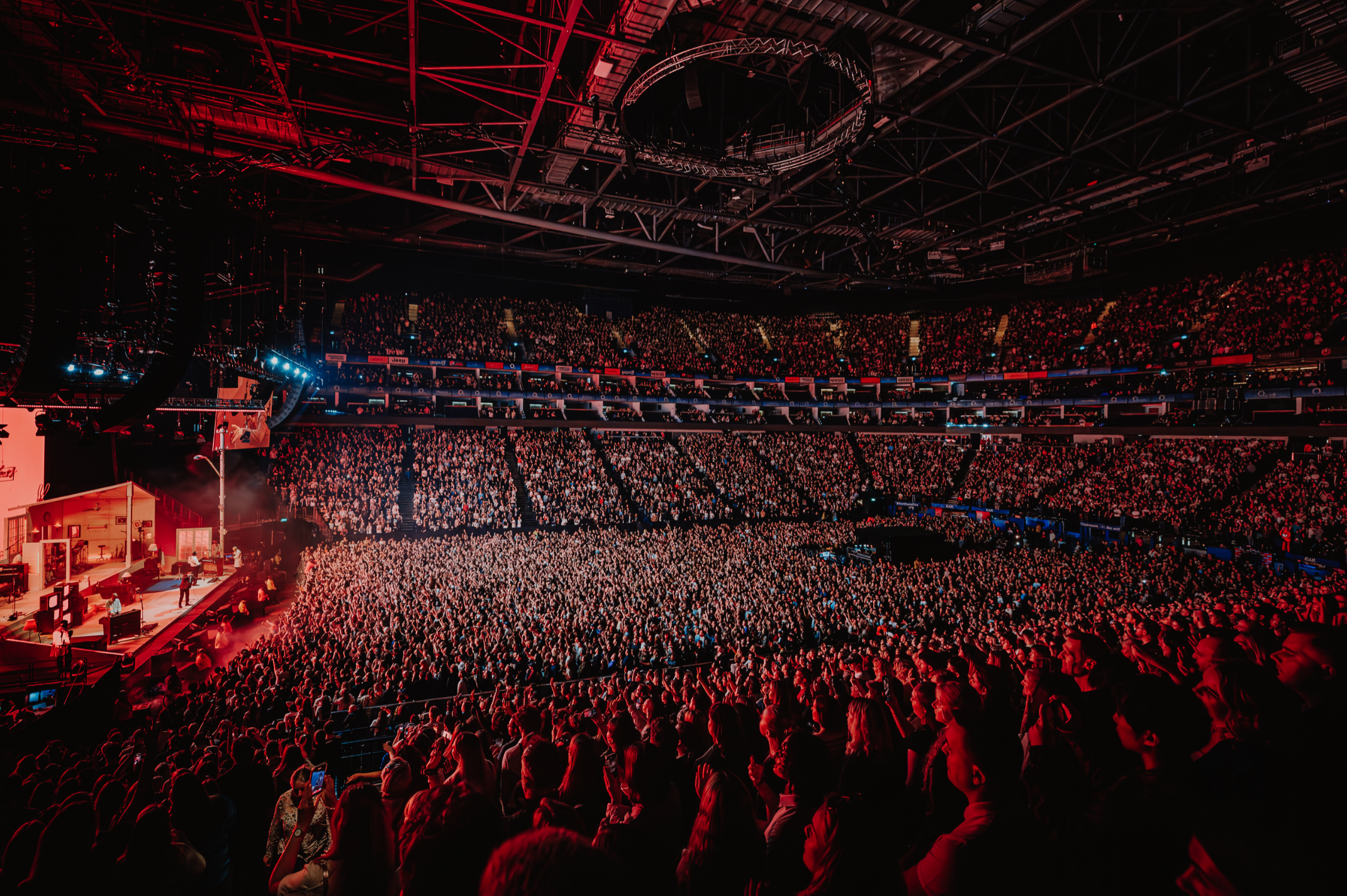
17 Apr 2024
A world-first: The O2 removes over 540 tonnes of carbon during pilot event series
- Data from The O2’s carbon removed arena events, which took place across The 1975’s four headline shows in February, revealed three quarters of nightly emissions came from fan travel to/from the venue
- Removing 136.46 tonnes of carbon per show, the leading venue worked with a range of sustainability specialists including CUR8 & A Greener Future to execute this world first pilot series, intended to inspire a low carbon future for the live industry
The O2, the world’s most popular live entertainment, leisure, and retail destination, has today announced the inspiring results from its pilot series of carbon removed arena events. Conducted across The 1975’s shows at the venue in February 2024, this world-first pilot saw the extraction and removal of 136.46 tonnes of residual carbon per show, equating to 545.9 tonnes across the four shows - the equivalent yearly electricity usage of 395 average homes. It now provides a successful blueprint for a more sustainable live event model utilising carbon removals.
Paving the way for a low-carbon future in live, The O2, which is owned and operated by AEG Europe, embarked on the process of hosting this groundbreaking pilot series in partnership with carbon removal experts CUR8, who offered specialist insight into the timely and durable drawdown of CO2, as well as sustainable event specialists A Greener Future (AGF). Using a portfolio of scientifically verifiable carbon removal methods, including enhanced rock weathering and biochar, the venue, in tandem with CUR8, was then able to physically extract the 136.46 tonnes of carbon generated by each event from the atmosphere and durably store it out of harm's way.
Thanks to initial venue data and insights from expert sustainability partners, The O2 was able to predict the approximate carbon emissions of each show in advance, and develop a commercially and sustainably conscious event model that saw each relevant party take responsibility for their own contribution to the event’s carbon footprint. As a further commitment to supporting a more sustainable future for live events, The O2 and CUR8 each donated an additional 1% on top of the cost for each tonne of carbon removed to EarthPercent, a climate foundation geared towards identifying and funding impactful climate solutions in the live entertainment industry.
A closer look at the resulting carbon footprint revealed that a staggering 75.7% of emissions came from fan travel, which was covered by a combination of venue investment and a 90p contribution from fans, which was incorporated into the original ticket price. Contrastingly, only 3.95% of the nightly carbon footprint came from arena operations - driven predominantly by electricity usage and staff travel. Contributing to this low emission figure for the arena is The O2’s significant investment in energy efficiency, with the recent installation of LED lighting and screens across the arena saving over 300,000kwh of energy in 2023 alone.
The O2‘s hospitality partner, Levy UK + Ireland, accounted for the removal costs across their operations, with carbon emissions for food & beverages across each show coming in at 7.46%, of which 85% was down to beverages. This low overall figure was aided by the introduction of several recent initiatives, including a new food menu which generated 30% less carbon compared to the regular offering, as well as the launch of Notpla serveware. This 100% biodegradable product has a 70% lower carbon footprint than standard serveware and can be processed in The O2’s on-site biodigester and wormery. Furthermore, The O2 has invested in a permanent reusable cup scheme and cup-washing machines powered by electricity from renewable resources, further reducing waste and emissions at the world-famous venue.
Sam Booth, Director of Sustainability at AEG Europe, commented: “With the success of this world-first pilot series of arena events, we’ve proven that it’s possible to run an arena-size live show which doesn’t compromise on a great fan experience but still accounts for the impact it has on the environment. We hope this serves as a wakeup call to the wider industry that carbon removals are a viable solution that can be used to operate live events, but they need buy-in from everyone in the live ecosystem in order to be a success - from venues and promoters right the way through to artists themselves. We’re fully committed to continuing to innovate and find even more ways to make our world-class events across AEG Europe more sustainable, as we strive for a low-carbon future for the live industry.”
Mark Stevenson, Co-Founder and Chief Impact Officer at CUR8, said: “The real heroes here are the teams at AEG Europe and AGF, who are working to reduce emissions as much as possible and then committing to remove the rest – and in doing so, helping fund the carbon removals operating system that the planet (and every organisation on it) will need to reach net-zero. Importantly, The O2 and AGF have demonstrated the art of the possible. We cannot have a live music industry where the only route to net-zero is to not exist. By using carbon removals to mitigate the complex ‘audience travel’ or ‘scope 3 emissions’ problem, all within the existing business model of live events, these concerts demonstrate a possible future – one that speaks to life well lived on a planet well loved.”
Pioneering a more sustainable future for live events The O2 was the first venue to launch its own Green Rider in 2023 - a document intended as a blueprint to make incoming tours and productions at the venue more sustainable. Furthermore, The O2 was also the first arena in England to receive its Greener Arena accreditation, awarded by AGF, and work is now underway at AEG Europe’s Uber Arena and Barclays Arena in Germany to undergo similar accreditation.